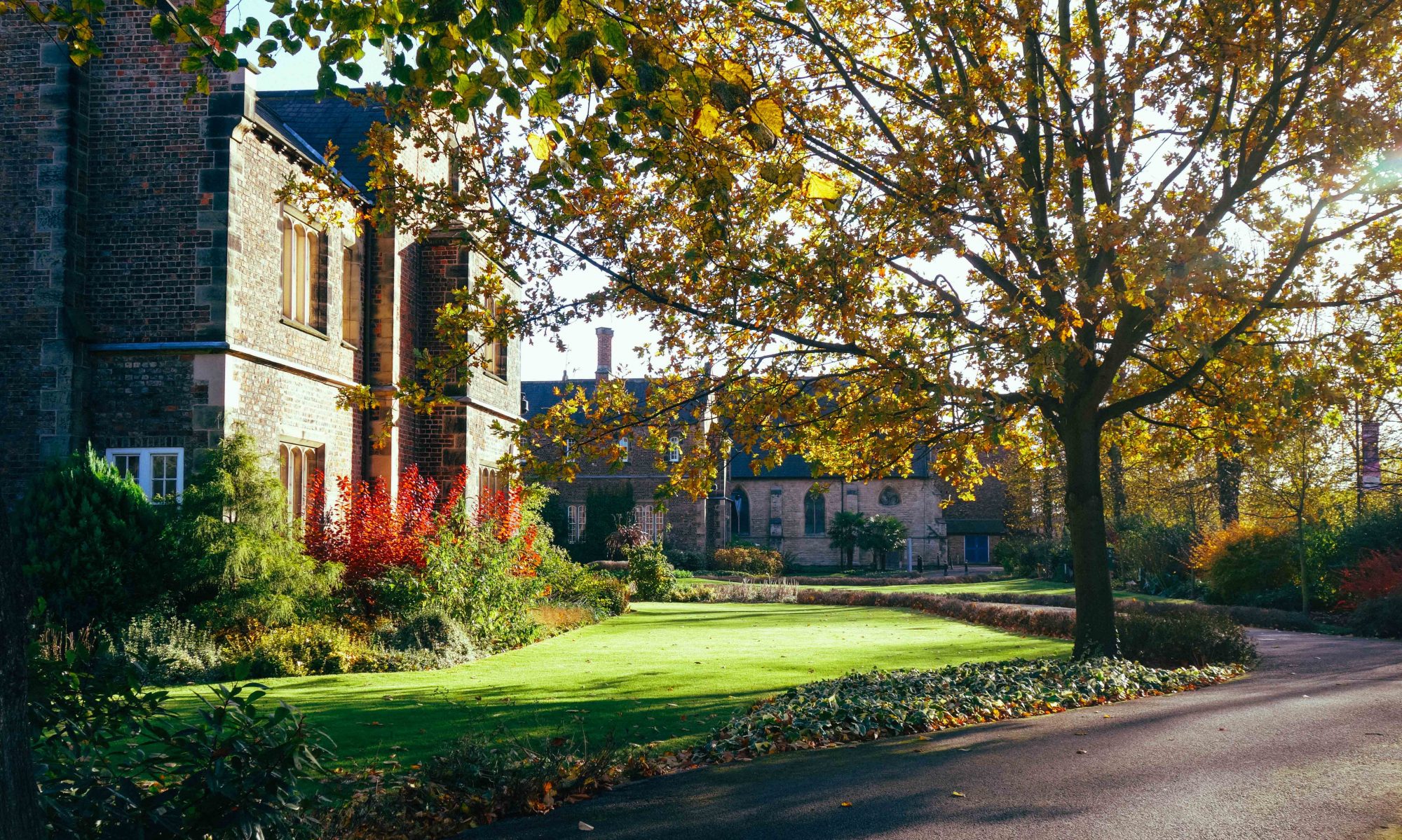Grace is a first year Film and Television Production student at York St John and a volunteer blog reviewer for York International Shakespeare Festival. In this review, Grace looks at Flabbergast Theatre’s production of ‘The Tragedy of Macbeth’ performed in the York St John Creative Centre on the 26th of April 2023.
Flabbergast Theatre’s ‘The Tragedy of Macbeth’ creates an unsettling yet powerful retelling of one of Shakespeare’s most violent tragedies, leaving you feeling unseam’d from the nave to the chops.

Before the audience are seated, the performers immediately plunge us into their unconventional methods, telling us the story of the tragedy through a series of interpretive dances and nonsensical sounds. Standouts from this prologue are the formation of hands used above Macbeth’s head to form a crown and the use of the long skirts pulled over the performers heads to create what looks like a ghost-like being crawling eerily around the stage.
These long skirts are part of the barren, arresting aesthetic adopted by Flabbergast, reminiscent of Robert Eggers’ 2022 film ‘The Northman.’ The stage is dressed only with a stained white sheet on the floor. The simplicity of the set allows the performers to have a much creative freedom as possible to create a visceral show, as there is more than one instance when a wine-like substance is either spat onto the sheet or into the face of another performer.
Each cast member wears a pair of pants underneath the long skirts, allowing for them to effectively switch between characters seamlessly with minimal physical changes. As the performance only consisted of six performers, many performers doubled in roles. A standout for me was Briony O’Callaghan’s chilling performance as Lady Macbeth, but also as one of the Weird Sisters. Her demeanour when playing both roles did not differ too greatly, which I believe positively added to the notion of Lady Macbeth’s cruelty being witch-like. Her delivery of Lady Macbeth’s final soliloquy was impeccable, and I was holding my breath at the prospect of her holding a lit candle so close to a highly-flammable sheet.
Another standout performance was that of Dale Wylde, who transformed the tragedy into a pantomime with his performance as The Porter, the dreaded character of GCSE students everywhere. His take on The Porter saw him as a clown, who broke the fourth wall and brought us to tears of laughter by simply showing us an apple. However, one of the most profound and horrifying moments was when Wylde portrayed a soldier that had just brutally murdered Macduff’s wife, then immediately snaps back into becoming the joking Porter again. The apple was back, but the laughter was a lot shakier this time.
The performance incorporates plenty of horror elements, particularly with the lighting. There is a harsh front light that is used to brightly illuminate the faces of whoever is giving a monologue, making their faces look gaunt and hollow. It accentuates the madness seen in the eyes of Macbeth in particular, who is often lit by a bloody red lighting that makes him impossible to look away from. Alongside its effect on the performers, this front lighting creates a shadow on the black curtain behind the stage, creating a spooky, haunting element to the show that unsettles us even further.
The most horrifying element of all is the use of a wooden puppet boy, used to depict Banquo’s son Fleance. The prop has no head, which is instead depicted with a white mask, and is carried around the stage using a large wooden stick or is cradled in the arms of the performers. It is a fascinating choice to use such abstract puppetry and it certainly became a talking point for most audience members. The bottom line on that is that it needs to be seen to be believed.
The performance is accompanied by the use three large drums, a set of gongs and smaller chime instruments, which are all visibly noticeable on-stage. All of these instruments are utilised heavily, alongside an acapella-style score created by the performers. It is truly impressive how the performers can morph from actor to crew member, using their musical skills to make scenes more exciting and immersive.
Overall, Flabbergast’s ‘The Tragedy of Macbeth’ can take a while to get into due to its overwhelming nature, but once you are immersed, you will want to stay to the bloody end. It has everything you could want in a Shakespeare adaptation: enough fidelity to the original text so that you will understand the story and hear those wonderfully crafted lines; but also offers a fresh, modern twist through the use of horror elements, barren sets and highly unconventional props. I would recommend it, although you might sleep no more.
Works Cited
The Tragedy of Macbeth by W. Shakespeare (2023) Directed by H. Maynard [York St John University, York. 26 April].
The Northman (2022) Directed by R. Eggers. [Feature film]. Universal City, CA: Universal Pictures.
If you would like to read another review of ‘The Tragedy of Macbeth’, check out Jenny-Rose Morrison’s piece on the York International Shakespeare Festival’s website: Life’s But A Walking Shadow: A Review of Flabbergast’s Macbeth by Jenny-Rose Morrison – York International Shakespeare Festival (yorkshakes.co.uk)













 Dr Adam J Smith
Dr Adam J Smith








